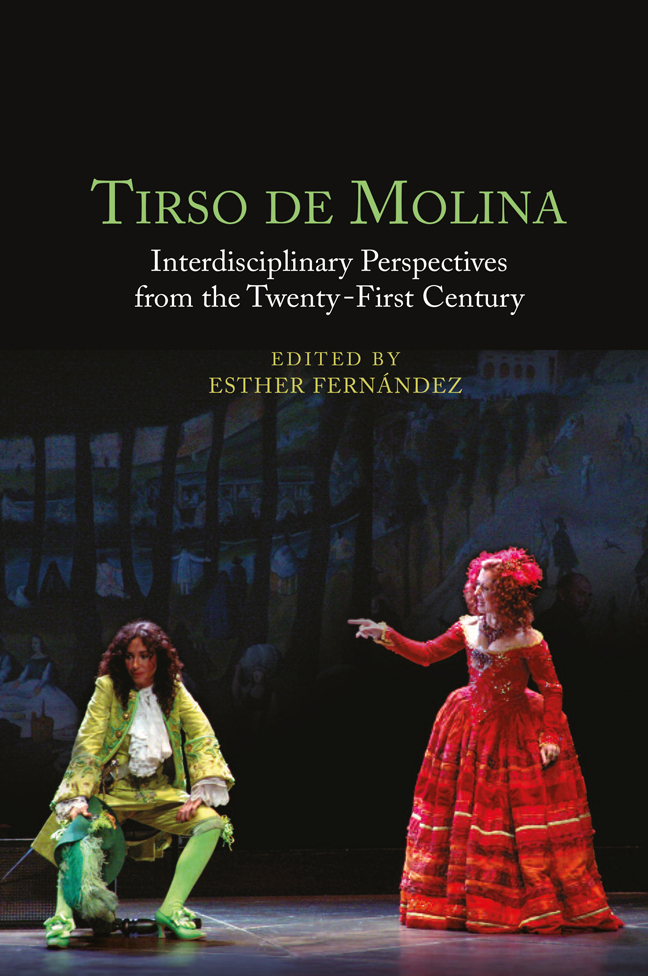5 - Melancholy Subjects: Pathological Love in the Plays of Tirso de Molina
Published online by Cambridge University Press: 02 March 2024
Summary
Albrecht Dürer’s 1514 engraving Melancholia I has become the prototypical image of the melancholic condition. In it, a winged figure, perhaps the personification of melancholy, sits with her cheek in her hand. She is in a crowded scene and yet she is disinterested in it all, a reflection of her internal affect. Amalia Quevedo (2011) argues that this image does not merely represent melancholy as it was understood in the Renaissance, but that it becomes a foundational text in the Renaissance and Baroque concept of melancholy as an illness (71). The figure’s pose, hand to cheek, for example, becomes a signal for a character’s melancholy across early modern arts and letters. The sense of sorrow and indifference that permeate the print are primary characteristics of melancholic figures on the Golden Age Spanish stage. Quevedo asserts that “Melancholy permeates the literature of the Golden Age as an attitude that is reflected in it and that creates it” (2011: 92). Melancholy both influenced and was influenced by the literature that portrayed it. The use of melancholy as a motif, as described by Raymond Klibansky, Erwin Panofsky, and Fritz Saxl (1964) in Saturn and Melancholy, shifted the popular perception of the illness.
Throughout his career, Tirso de Molina wrote several purportedly melancholic characters into his plays. Given the frequency of his portrayals of melancholy compared to other illnesses, it might be considered to have held special interest for him. There have been extensive lines of inquiry, however, into whether these characters truly suffer from a medical illness, or whether their melancholy is feigned to hide the true reason for their symptoms: love. That Tirso represents lovesick melancholy more often than any other category of the malady links the notion of love with illness and wellness, creating a metaphoric connection between the two. It appears, in fact, that the primary function of Tirso’s representations of melancholy is not an examination of the illness or mental condition itself, but rather an exploration of the psychology of the lover and the potential mental distress that can be caused by imperfect love. The issue of the veracity of the melancholies represented in Tirso’s oeuvre, the focus of several other studies, is immaterial to the question of the dramatic function of these representations. Love becomes illness, both mental and physical, if only because it is so easily mistaken for the true medical disease of melancholy.
- Type
- Chapter
- Information
- Tirso de MolinaInterdisciplinary Perspectives from the Twenty-First Century, pp. 73 - 85Publisher: Boydell & BrewerPrint publication year: 2023



